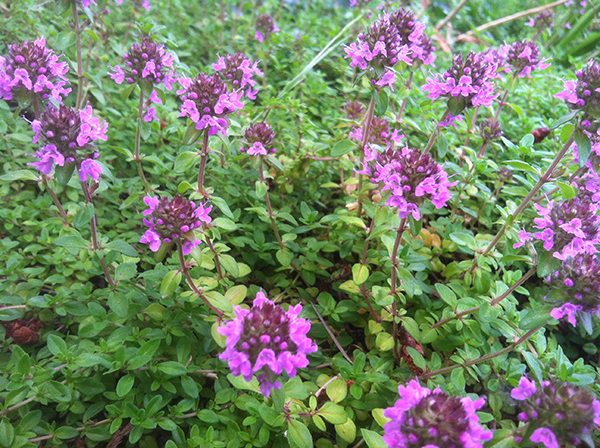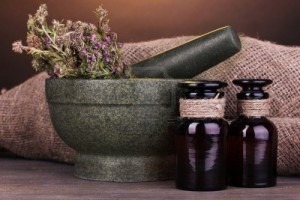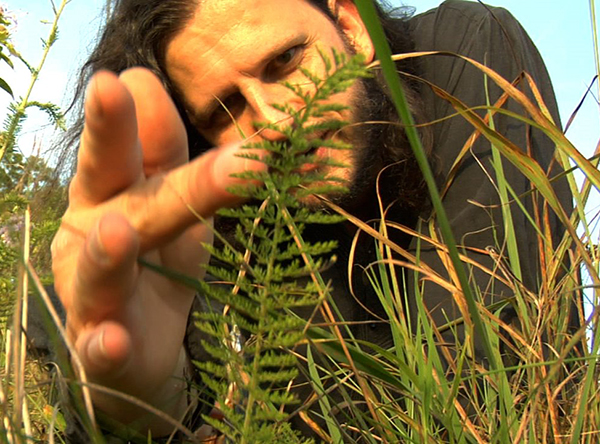 New Year’s day was as one of those perfect Pacific Northwest winter days — 45 degrees, misty and soft. The kind of day that smells and feels like earth.
New Year’s day was as one of those perfect Pacific Northwest winter days — 45 degrees, misty and soft. The kind of day that smells and feels like earth.
My garden is pretty much hibernating. A long spell of deep cold knocked back the last of my greens. There’s a fairly even layer of deciduous leaves covering the ground, punctuated by bare limbs and decomposing stalks.
Still, it was a day to survey. And one of the bright points was indefatigable thyme, sprightly in the day’s gloom at the base of a fig tree.
Herbalists often like to play around with favorite herbs lists: If you only had three (or five, or ten) herbs to work with, which would you choose? On my lists, thyme always shows up. It’s incredibly easy to grow, tastes fantastic and makes powerful medicine.
In the kitchen
Most people know thyme (Thymus vulgaris) as a classic salad-dressing herb. It’s a staple of Mediterranean cooking and comes in every prepackaged herb rack. Tossing thyme onto sliced vegetables before baking automatically elevates your meal from food to cuisine. My mother —neither an herbalist nor a gardener — says, “everything is better with herbs on it.” She was talking primarily about thyme.
Try this recipe as a starting point:
- Lemony thyme cookies. A friend made a version of these over the summer (without the ginger) and it was surprisingly yummy, with a lovely, bright flavor.
Thyme’s medicine
 As its most history of culinary use suggests, thyme helps support digestion. The compounds that give the plant its strong smell make your gastrointestinal tract do its job more efficiently. Thyme also is broadly and fairly strongly antimicrobial, killing bacteria, viruses, fungi and parasitic worms.
As its most history of culinary use suggests, thyme helps support digestion. The compounds that give the plant its strong smell make your gastrointestinal tract do its job more efficiently. Thyme also is broadly and fairly strongly antimicrobial, killing bacteria, viruses, fungi and parasitic worms.
If you’re worried about the flu, for instance, consider using it in an antiviral soup. When taken internally, thyme also promotes excretion through the urinary tract, and helps disinfect on its way out.
One of thyme’s less-known uses — and one of my favorites — is as a respiratory aid. It soothes the lung’s mucous membranes, reduces spasms, fights pathogens and helps you cough out accumulated gunk.
Brand-new research also suggests thyme is a potent anti-inflammatory. It’s cited as potentially helpful in preventing diabetes, arthritis, heart disease and cancer. But as inflammation lies at the heart of many health problems, that list is surely longer.
Steaming is a great for this purpose: Take a large handful of fresh or dried herb, put it in a bowl and cover with boiling water. Then, with your head over the bowl and under a towel, breathe deeply to get the herb’s aromatic oils into your nose and lungs.
Externally, thyme makes a great skin wash or soak to help fight or prevent infections. While I prefer the fresh herb, it’s okay to cautiously use the diluted essential oil, no more than one drop at a time. Don’t do this if you’re steaming — I say from experience that it burns like crazy!
In the garden
In many ways, thyme is a perfect garden plant. It’s easy to grow in the ground or in pots, stays green year ‘round, and doesn’t need fancy soil or a lot of water. It forms low mats of varying widths, with adorable tiny flowers like a miniature heather. Like many of its mint-family relatives, its feeds good bugs like honeybees and other pollinators.
Grow thyme on any sunny windowsill, porch or patio. If you’ve got a bit of ground, try it between pavers — several varieties can handle moderate foot traffic — or grow over wide surfaces as a groundcover or low-maintenance lawn. Also consider interplanting it in your veggie or flower beds, where its aroma helps confuse harmful bugs.
Almost every sells a couple varieties of thyme, including common or English thyme, lemon thyme and usually at least one variegated variety. Farmer’s markets and food co-ops often sell plants, too; this is a great way to get the best varieties for your area, at the best prices, while establishing connections with local farmers.
It’s hard to avoid puns when you’re talking about this plant. But really, you should have a good thyme!




